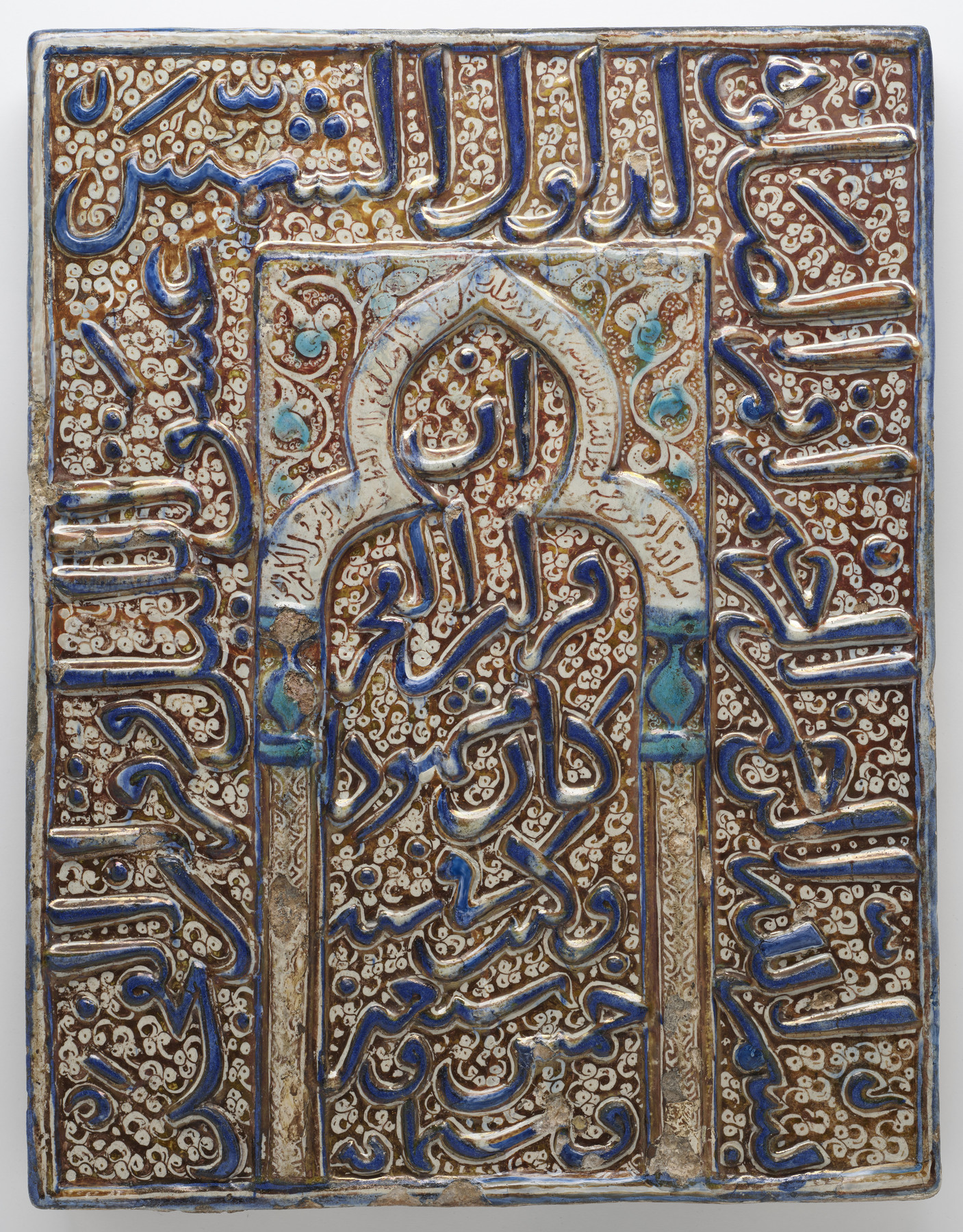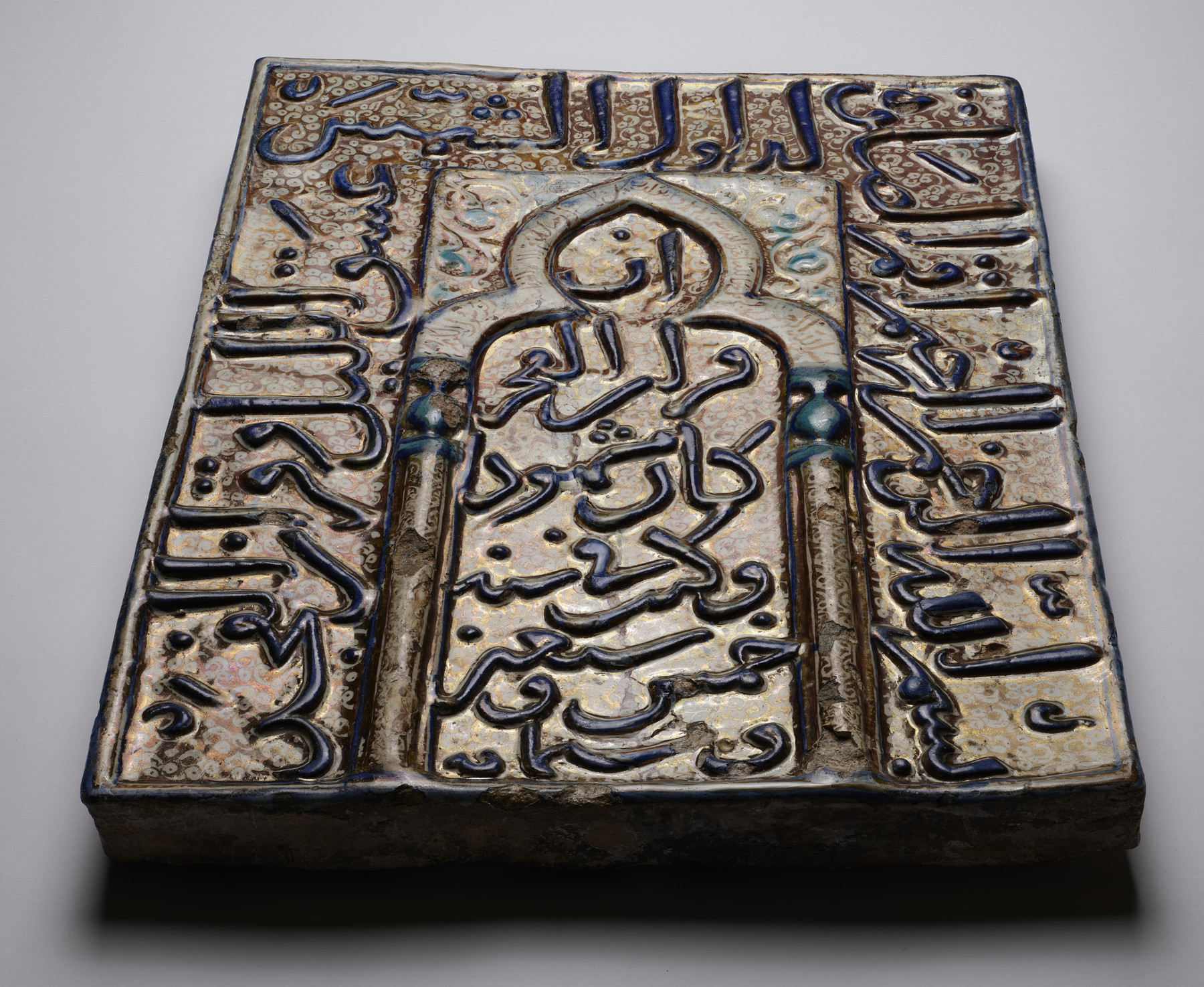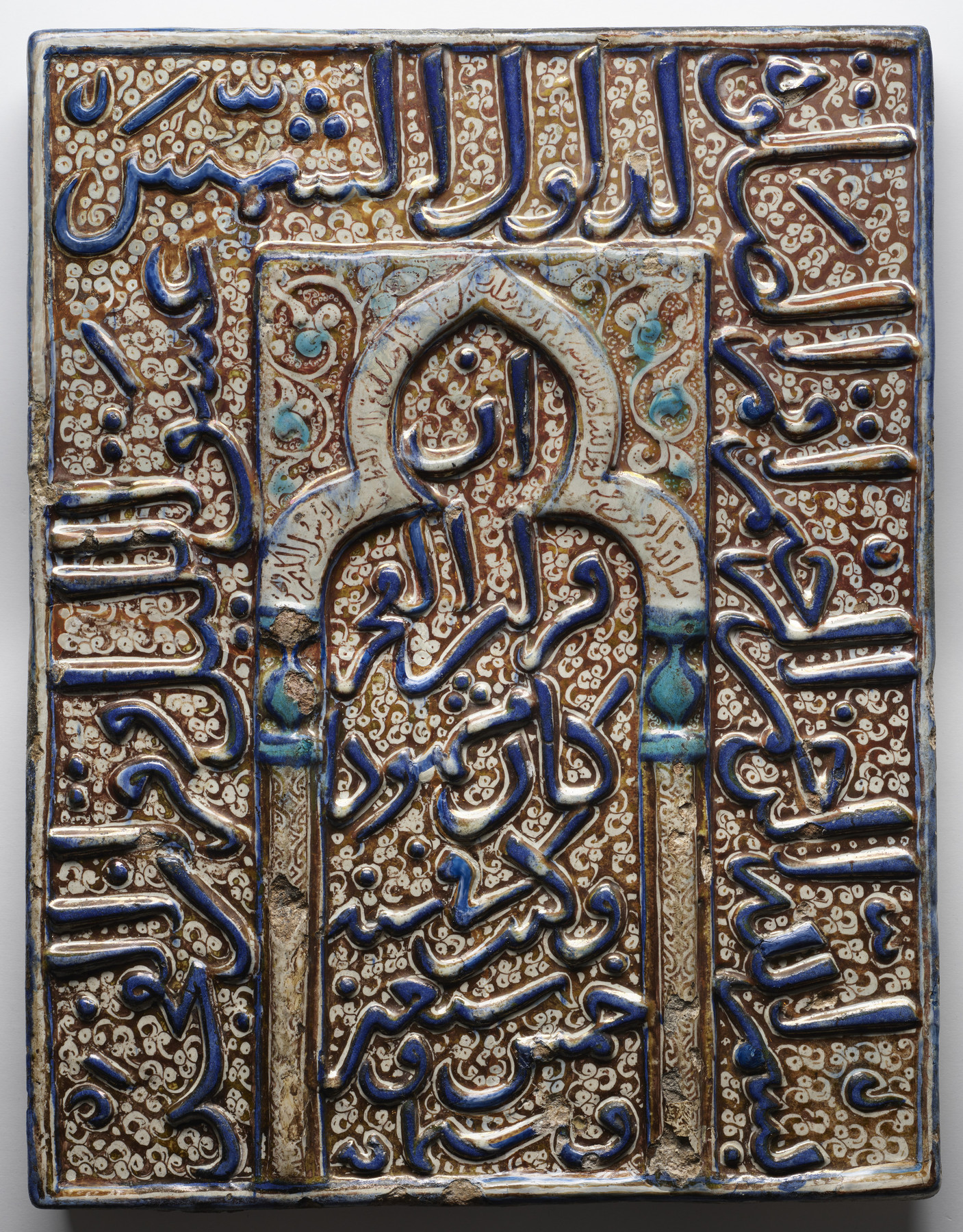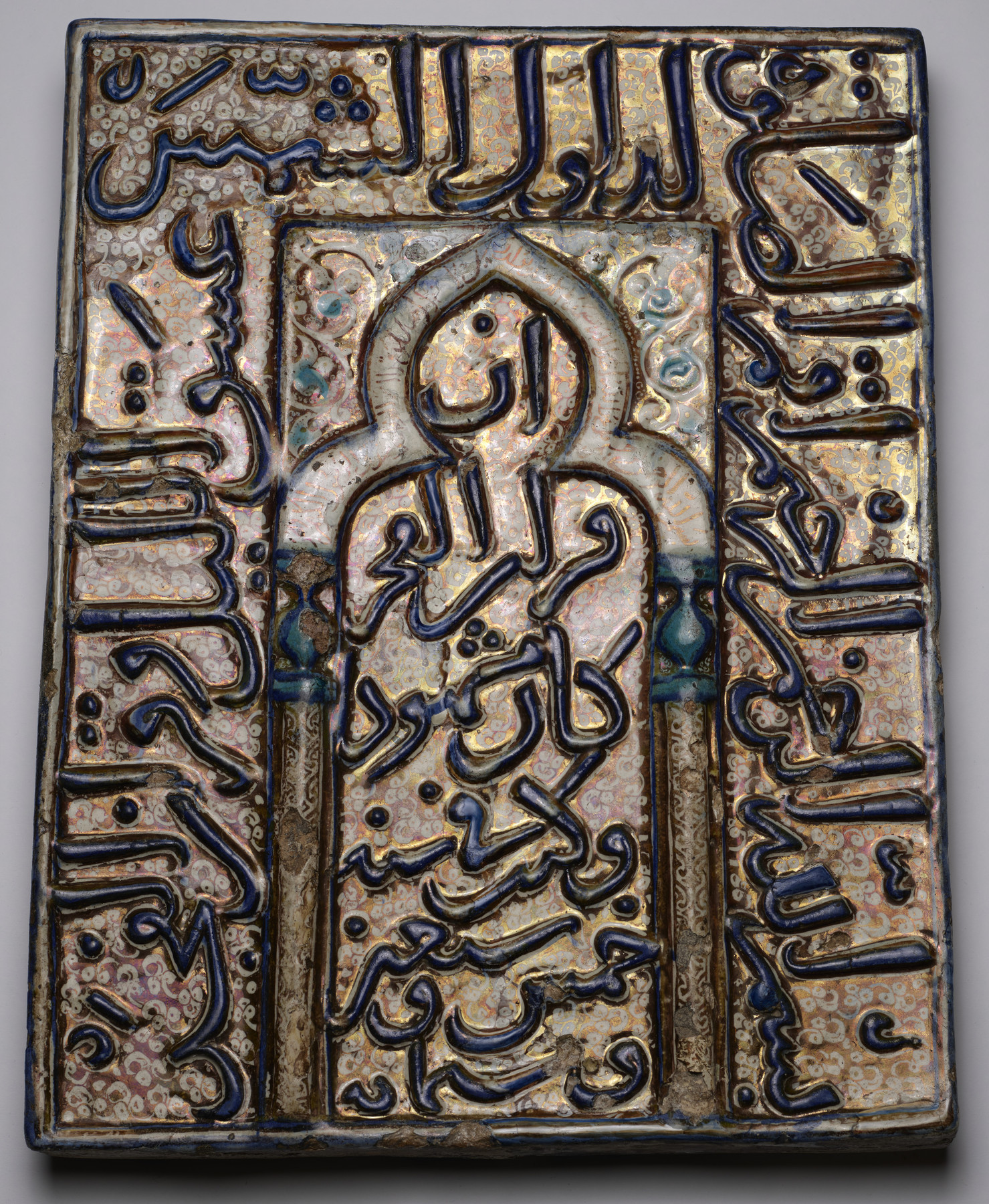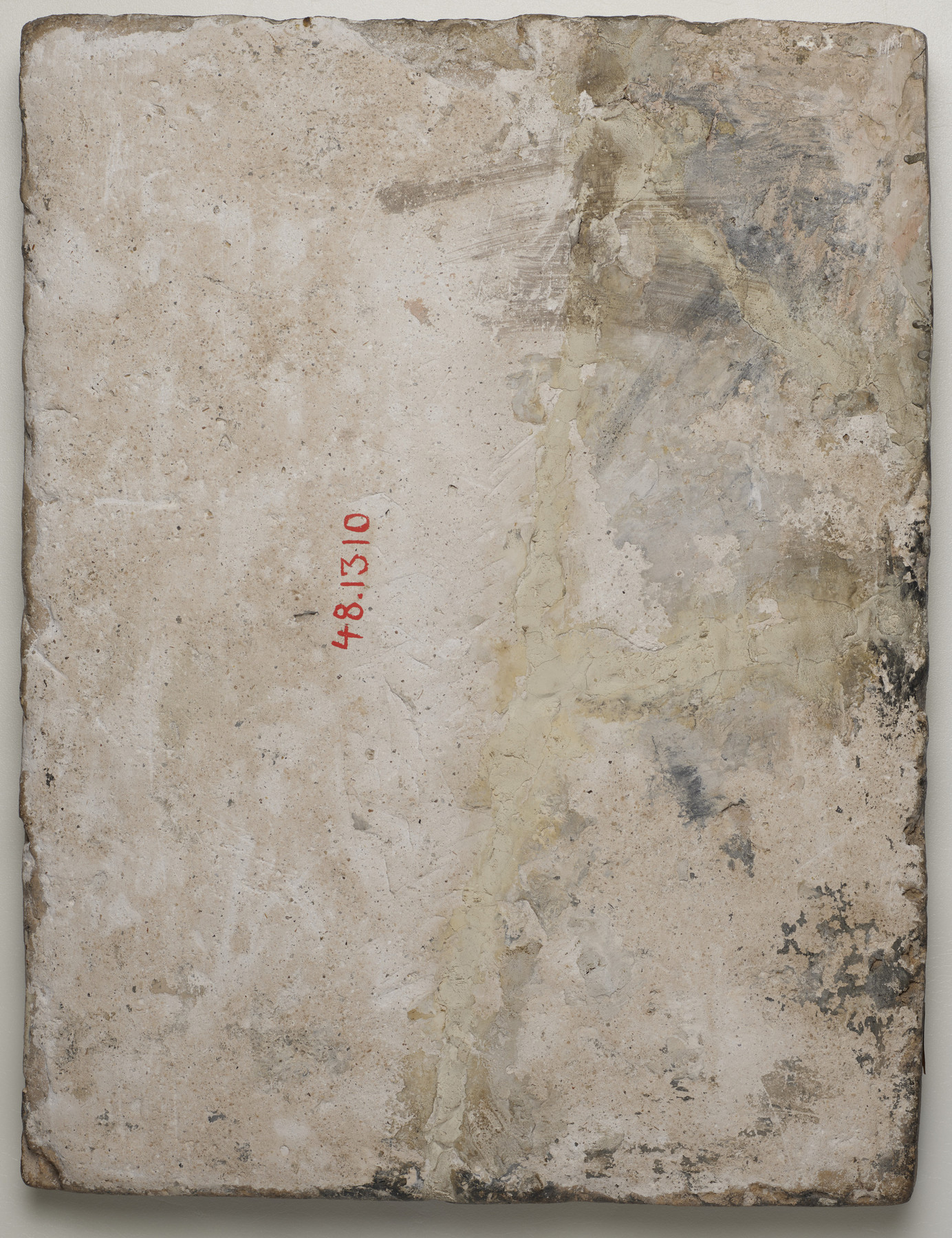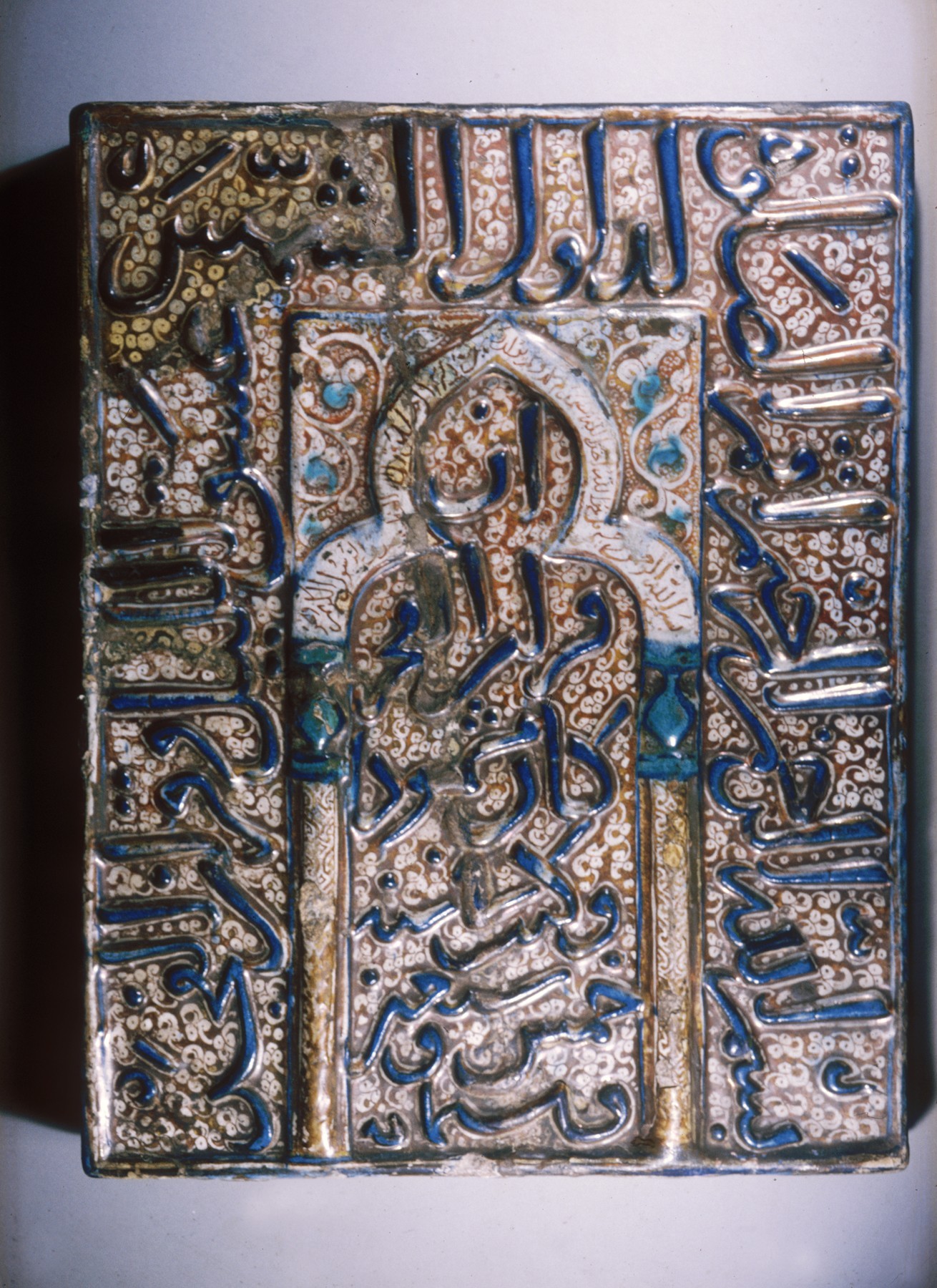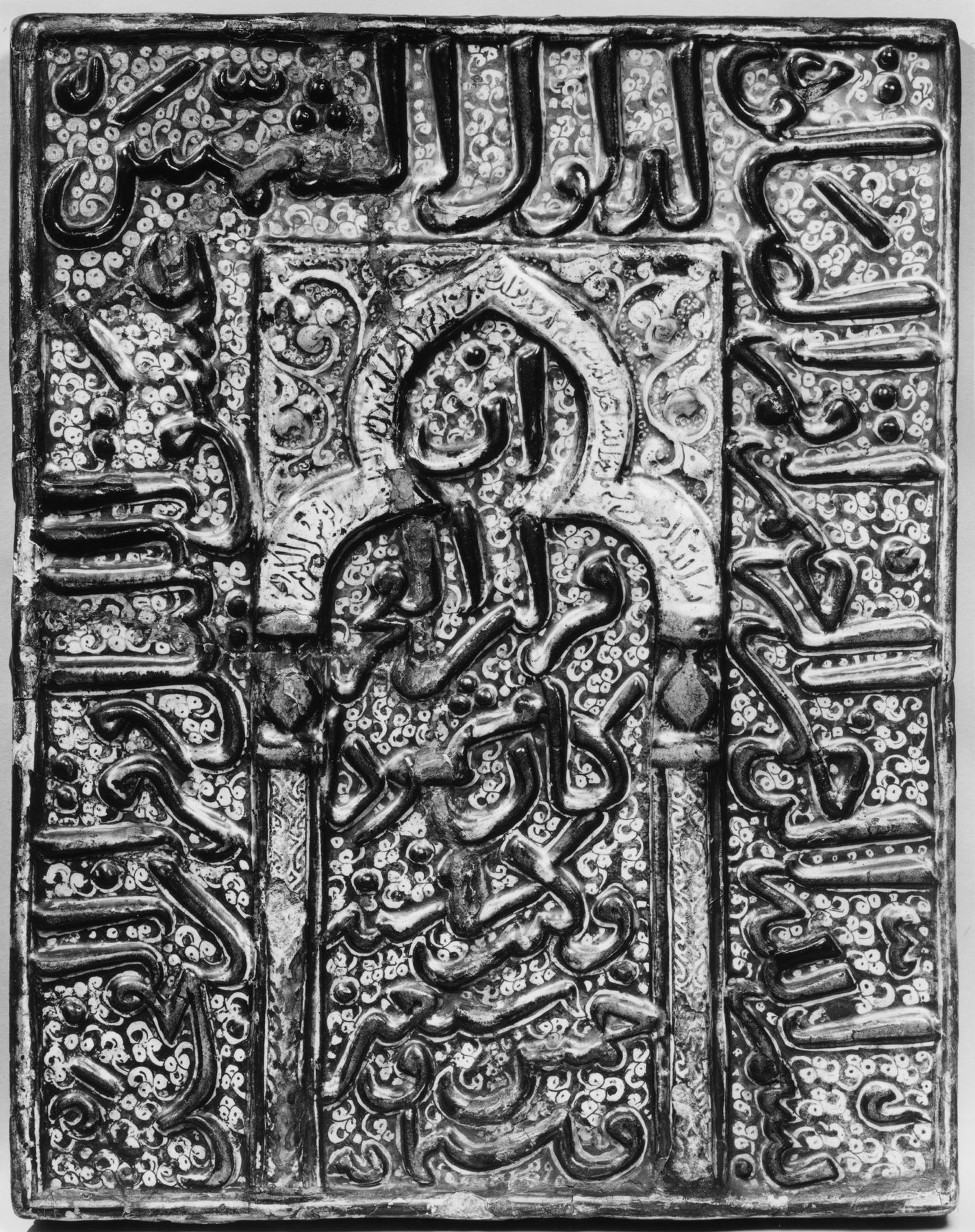"Mihrab" Plaque
(Islamic World )
A mihrab is a niche in a mosque or other Muslim religious building that indicates the direction for prayer toward Mecca, recalling the place where the Prophet Muhammad stood to lead the early Muslim community in prayer. Ceramic plaques in the shape of mihrabs are often found in shrines and mausoleums and on tombstones and cenotaphs (funerary monuments), where they may have had a commemorative or memorial function.
With its combination of molded and painted decoration, this blue and brown lusterware work is typical of ceramic "mihrab" plaques made in medieval Iran. The large inscription in the outer frame begins with the "bismallah" ("In the name of God, the Merciful, the Compassionate") and continues with a Qur'anic verse that refers directly to the recitation and prayer that Muslims perform in front of a "mihrab": "Establish regular prayers at the sun's decline till the darkness of the night, and the morning prayer and reading: for the prayer and reading in the morning carry their testimony" (Sura al-Bani Isra'il: chapter 17, verse 78). One of the final, and shortest, chapters of the Qur'an (Sura al-Ikhlas: chapter 112) is inscribed on the white band around the central arch.
Inscription
Provenance
Provenance (from the French provenir, 'to come from/forth') is the chronology of the ownership, custody, or location of a historical object.
Henry Walters, Baltimore [date and mode of acquisition unknown]; Walters Art Museum, 1931, by bequest.
Exhibitions
| 1980 | Islamic Insights. Katonah Gallery, Katonah. |
Conservation
| Date | Description | Narrative |
|---|---|---|
| 2/17/1972 | Treatment | repaired; loss compensation |
| 2/26/1980 | Examination | examined for condition |
| 2/28/1980 | Treatment | cleaned |
| 2/28/1980 | Treatment | cleaned; loss compensation; other |
| 6/15/2001 | Treatment | loss compensation; cleaned; coated; repaired |
Geographies
Iran, Kashan (Place of Origin)
Measurements
H: 18 9/16 x W: 14 1/4 x D: 1 15/16 in. (47.2 x 36.2 x 5 cm)
Credit Line
Acquired by Henry Walters
Accession Number
In libraries, galleries, museums, and archives, an accession number is a unique identifier assigned to each object in the collection.
In libraries, galleries, museums, and archives, an accession number is a unique identifier assigned to each object in the collection.
48.1310

